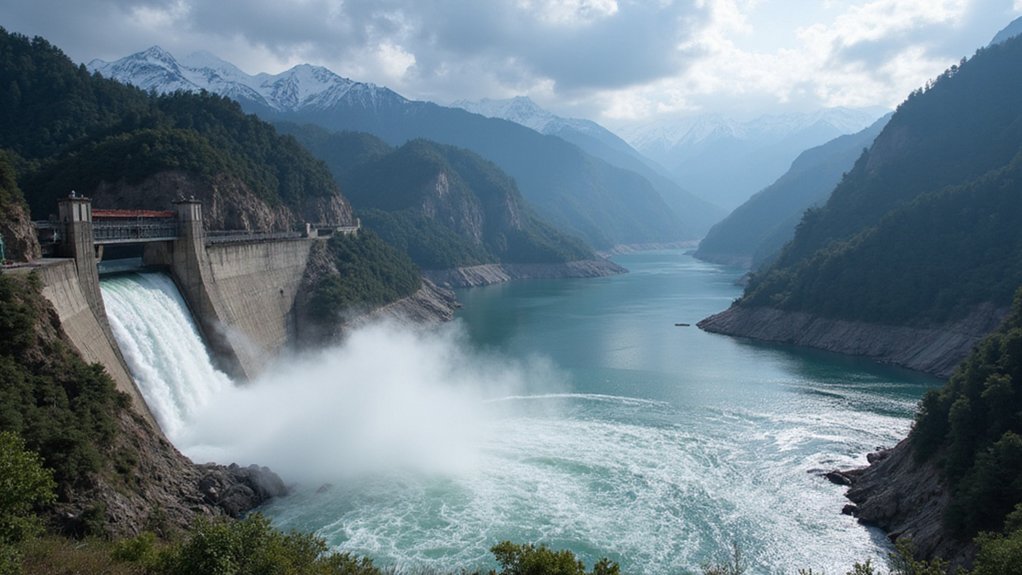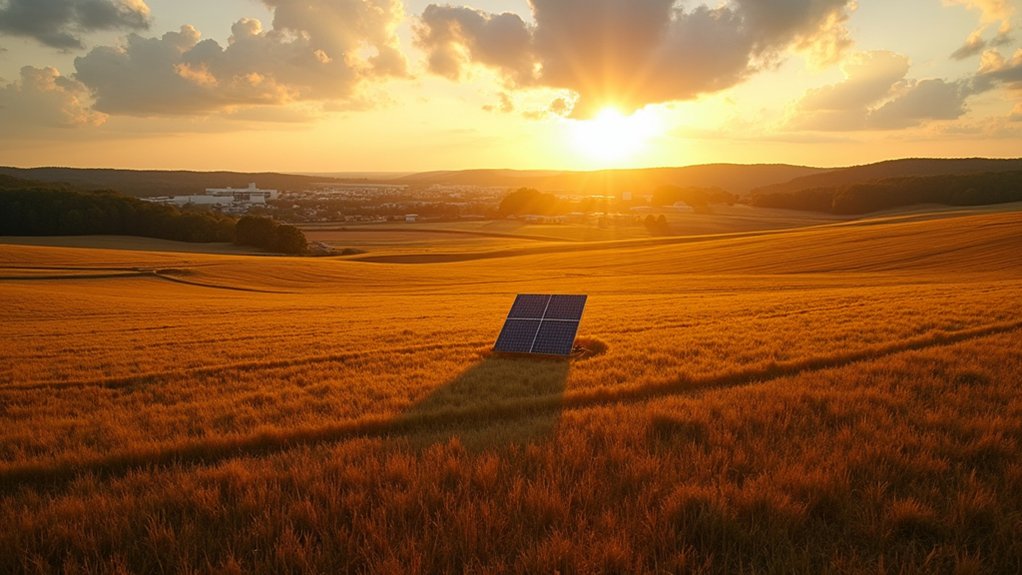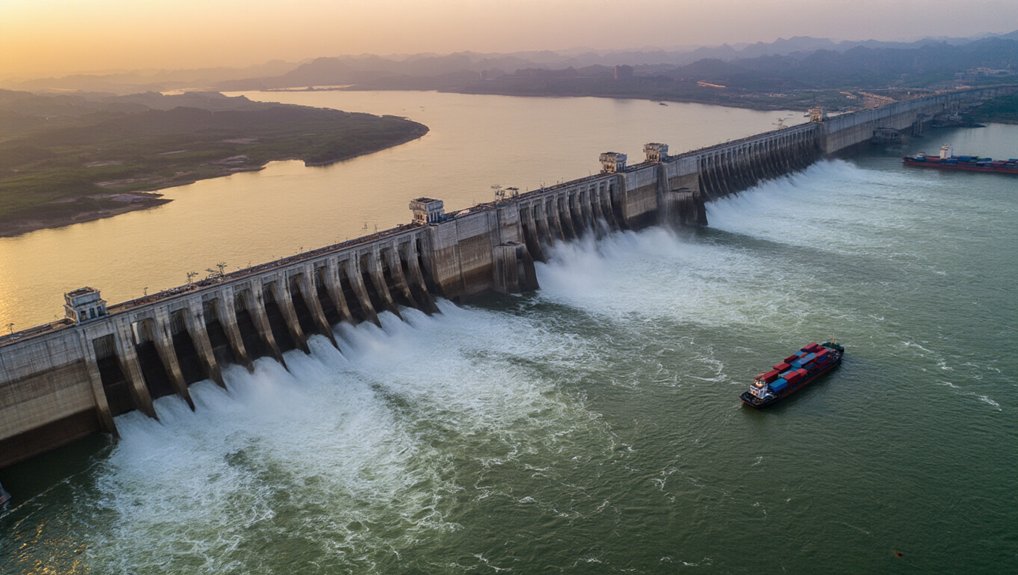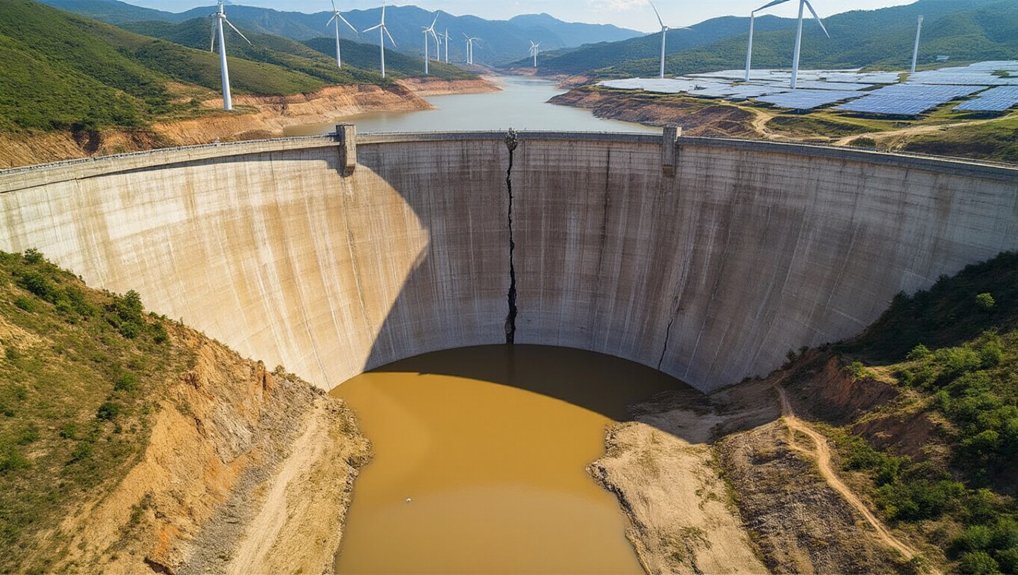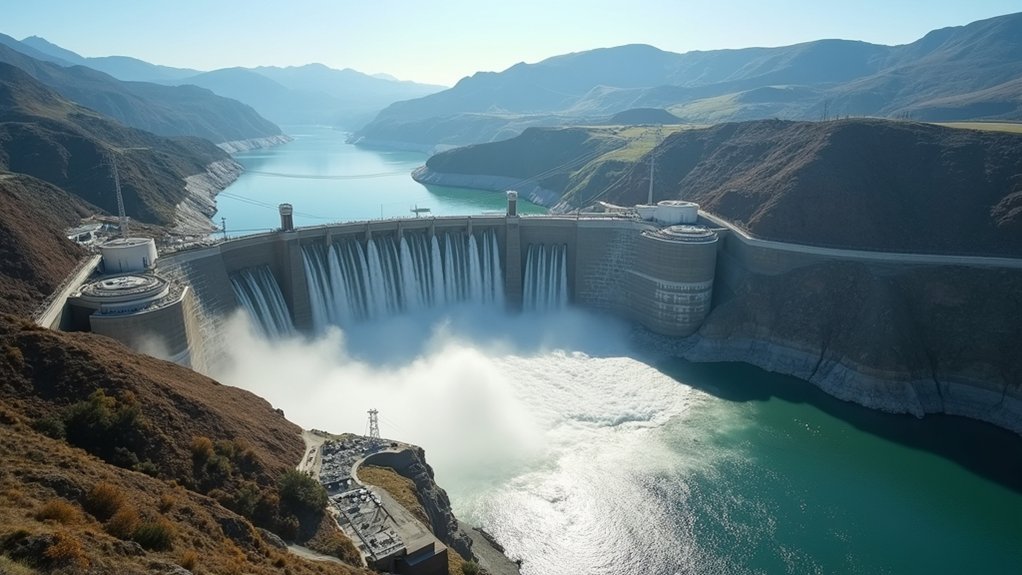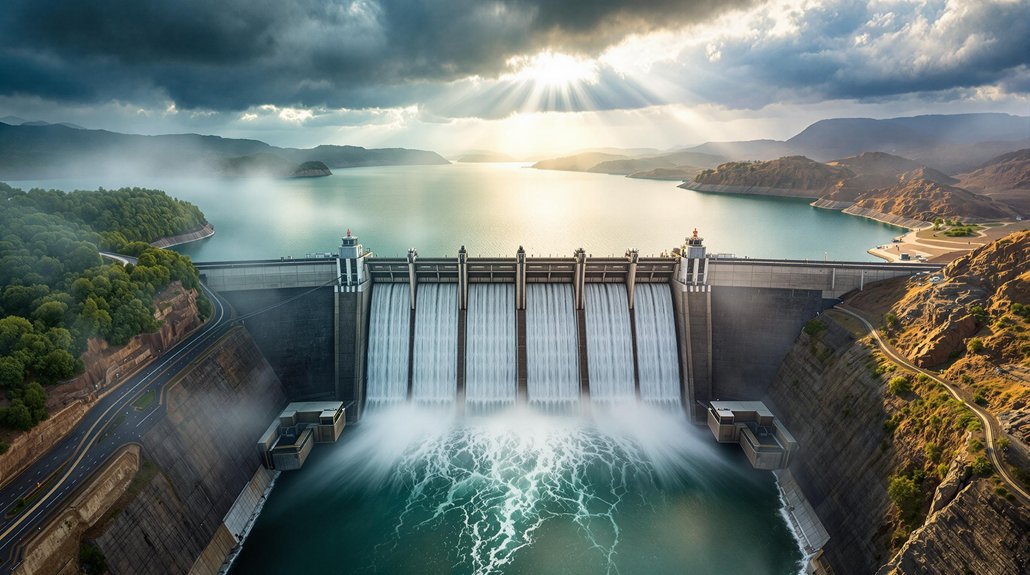India’s aggressive hydropower push follows its Indus Treaty suspension. With 79% of potential still untapped, the nation is eyeing massive projects in the Himalayas and Northeast regions. Currently operating 197 plants, India generates power for just 27 paise per kWh—dirt cheap by any standard. The projects serve dual purposes: irrigation for 12.5 million acres and strategic leverage in water disputes. These dams aren’t just concrete and turbines; they’re geopolitical chess pieces.
While many countries chase solar and wind energy, India’s sitting on a hydropower goldmine. Fifth in the world for installed hydroelectric capacity, with 46,000 MW as of 2020. Not bad. But here’s the kicker – a whopping 79% of India’s hydropower potential remains untapped. That’s right, nearly four-fifths of possible power just waiting to be harnessed.
While the world goes green with envy, India’s hydropower potential sits like buried treasure—79% still waiting to be discovered.
The numbers tell the story. One hundred ninety-seven hydroelectric plants currently operational. Major players like the Bhakra Beas Management Board pumping out 2.9 GW, keeping the northern grid humming. And they’re doing it on the cheap – just 27 paise per kWh after four decades. Try getting that kind of deal from your local utility company!
The geography makes perfect sense. The Brahmaputra basin holds the most potential, with the Indus and Ganga not far behind. East-flowing rivers pack more punch than their western counterparts. No wonder the Himalayan and Northeast regions are where the action is.
Public sector dominates the hydro scene – producing 92.5% of total hydroelectric output. NHPC, NEEPCO, and other alphabet-soup agencies running the show. Private companies are itching to get in on the action, especially in those juicy Himalayan spots. Unlike geothermal energy, which boasts 95% availability factor, hydropower can be affected by seasonal water flow variations.
It’s not just about keeping the lights on. These massive dams irrigate 12.5 million acres of farmland. That’s a lot of crops. Plus, hydropower gives India leverage in water-sharing negotiations. Nothing says “let’s talk” like controlling the headwaters.
Projects like the towering Tehri Dam and the 1000 MW Indira Sagar aren’t just engineering feats. They’re strategic assets. Small hydro projects (under 25 MW) fill in the gaps, especially in rural areas where the grid doesn’t reach. The country has identified 56 pumped storage sites with a combined capacity of 94,000 MW to help meet peak energy demands. The first-ever hydroelectric project in India was built in Darjeeling, West Bengal back in 1897, pioneering the nation’s journey into renewable energy.
The future looks wet. With only 21% of potential developed so far, India’s hydropower story is just beginning to flow.
References
- https://en.wikipedia.org/wiki/Hydroelectric_power_in_India
- https://testbook.com/ias-preparation/hydroelectric-power-plants-in-india
- https://indiawris.gov.in/wiki/doku.php?id=hydro_electric_projects
- https://mnre.gov.in/en/small-hydro-overview/
- https://byjus.com/free-ias-prep/hydroelectric-power-plants-in-india-for-upsc-prelims/
